Last Days of Mussolini
Introduction
Aside from Joseph Stalin, the end of the Second World War saw a 'changing of the guard' when it comes to the wartime leaders: Franklin D. Roosevelt died in office and Truman oversaw the US victory over Japan, Churchill was voted out of office in the 1945 British General Election, Emperor Hirohito was stripped of his powers but allowed to remain as a figurehead, Adolf Hitler committed suicide and his body was burnt in a ditch and Benito Mussolini was executed in the street and his body taken to Milan where it was hung upside down from a meathook.
It is the latter of these which is arguably the most interesting as, prior to his summary execution, there was great debate about what should happen to Mussolini and a huge manhunt sparked when he gave up all rights to a trial by fleeing Milan with his mistress, Clara Petacci. Due to the Geneva Conventions and mooted War Crimes Tribunals, there was much political capital to be had in detaining the Italian Dictator and offers were made that he could turn himself over to various parties, not least the US Army, for a guarantee of personal safety but he chose to carry on the fight before giving up and trying to flee to Switzerland. Holed up in the small alpine village of Mezzegra, Mussolini was apprehended by the 52nd Garibaldi regiment and, with his mistress, shot in the street by Colonel Valerio.
Just as Oliver Hirschbiegel did with 2004's Downfall (Der Untergang), Carlo Lizzani dramatised the final days of the man who ruled his country with an iron fist, showing the human side to the man as well as contextualising the events in the wider war. With Rod Steiger as Mussolini, Henry Fonda as Cardinal Schuster, the man who tried to negotiate his surrender in Madrid, Franco Nero as Valerio and Lisa Gastoni as Petacci, Lizzani had a cast with recognisable names both in Italy and America.
Video
Apparently taken from the original negative, the new uncut transfer is far from pristine, with some softness and grain evident throughout but I have no point of comparison having never seen the film before. The attention to detail is incredible, with excellent costuming and recreation of the look of wartime 1945. There are several flashback scenes to Mussolini watching propaganda films in a small cinema with his high command and the screen is given an artificial blue surround that covers the audience in front of the screen.
When you see the words 'new transfer taken from the original negative' you expect something sharp and with good definition but, sadly, this doesn't appear to have undergone massive restoration and the picture is a little disappointing but doesn't detract too much from the film.
Audio
Typically for an Italian film, the dialogue was dubbed in post-production so there is no problem with the international cast; Italian films of that time usually recorded the dialogue afterwards so filming is not interrupted by ambient noises. The subtitles don't appear for the whole film, appearing when Italian, German and English is spoken but, strangely, don't always appear during English dialogue, leaving entire scenes without. There is also the oddity of some German soldiers speaking Italian with others speaking German!
Extra Features
The interview with Carlo Lizzani isn't as long or as detailed as I'd hoped for, running at 16 minutes and not covering the film in as much depth as a longer featurette or expert commentary would have done. It's worth a look and is an interesting addition but you feel a little short changed whereas if there were no extras, you wouldn't really think of what might have been.
There is also the theatrical trailer and a photo gallery which has to be manually navigated and doesn't add much.
Conclusion
As I mentioned in the introduction, the fate of Benito Mussolini was the most interesting of any of the wartime leaders. Downfall is a tremendously tense and well acted film but is confined to one location, with Hitler stuck in his Berlin bunker. Last Days of Mussolini (Mussolini: Ultimo atto), on the other hand, is a sprawling film, following the Duce from Milan to near the Swiss border, through small villages and around mountain roads. Even before he leaves the city, the exchanges with Cardinal Schuster are complex political negotiations as the door is opened for Mussolini to turn himself in to one of the organisations willing to give him safe haven in return for co-operation - the Americans were keen to have him in custody due to the large Italian population in the US and how useful he would be as a propaganda tool. However, there were fascists still wanting to carry on the fight and partisans growing in numbers, power and influence.
There is little time spent in the cottage where Mussolini and Petacci spent their final night, seemingly Carlo Lizzani was more concerned with the macro situation than Mussolini's mental wrangling. There are facts surrounding these last few days - people, places, dates etc. - and since we don't know what Mussolini was thinking, there is no point in speculating; he was a man seeing his dream of a fascist world, which he would share with Hitler, collapse and desperately thinking of ways out of a drastic situation.
Rod Steiger looks like Mussolini, with his shaven bullet head and solid build, but by most accounts he was gaunt and drawn at the end which is why Lizzani first considered the thinner, but largely unknown, Robert Duvall. Steiger was a big name and Oscar winner and gives a great performance, not only looking like the Duce but behaving like him with the same mannerisms, but not in an exaggerated way that would have become a pastiche. In the other main roles, Henry Fonda is impressive as the Cardinal, as are Lisa Gastoni and Franco Nero - the final confrontation between Mussolini, Petacci and Valerio has real emotion to it, aided by the decision to shoot on location, by the real gates where the events took place on April 28th 1945.
All in all, an impressive and involving film that is good to see uncut and available in the UK; it's just a shame the picture isn't as good it could be and the extras are a little light - a reunion with Carlo Lizzani, writer Fabio Pittorru, Franco Nero and Lisa Gastoni would have been great to see.
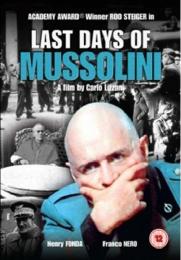

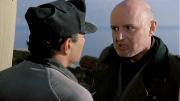
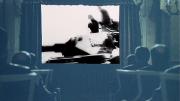


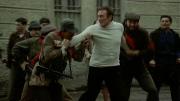
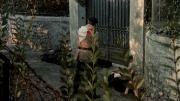
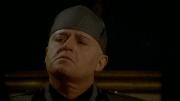
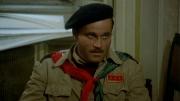
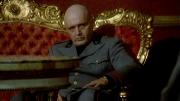




































Your Opinions and Comments
Be the first to post a comment!